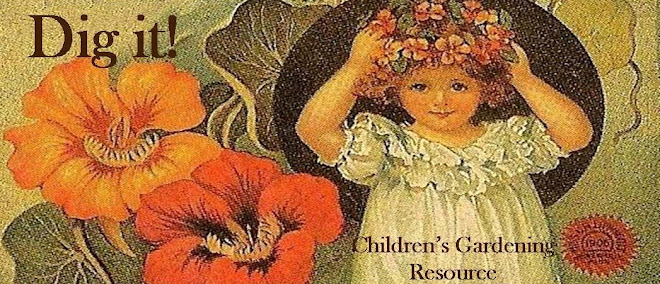
This show is not intended for the experienced gardener, but rather a more popular audience. It's great for kids and it's a nice introduction to ecology, family gardening, and making a commitment to conserving wildlife. Even the more experienced gardener can't help but think about the potential their own yard has at attracting wildlife. After just seeing a couple of episodes, my kids are really motivated and excited about working towards our own NWF Wildlife Habitat certification.
At its essence, your yard needs to provide elements from each of the following areas:
- Food: native plants, seeds, fruits, nuts, berries, nectar planted or provided in feeders
- Water: birdbath, pond, water garden, stream
- Cover: thicket, dense shrubs, rockpile, birdhouse
- Places to Raise Young: Dense shrubs, vegetation, nesting box, pond
- Sustainable gardening practices: mulch, compost, rain garden, chemical-free fertilizer
I'll keep you posted about our progress. Check out http://www.nwf.org/ for more information about their certificate program. Their website is an excellent resource for information on wildlife gardening, starting community and school gardens, and Green Hour (which I LOVE). Also, the NWF website has native and invasive plant lists, bird and wildlife field guides, and life lists you can view or print out.

The show sounds great. I don't get cable, so I wonder if these shows are available on DVD? Love your blog. My favorite children's books include Miss Rumphius by Barbara Cooney, The Gigantic Turnip by Aleksey Tolstoy, and Tops and Bottoms by Janet Stevens. If you want to visit a great interactive children's garden, visit the 4-h children's garden at Michigan State University in East Lansing. They have a virtual tour at http://4hgarden.msu.edu/kidstour/tour.html but it's not as good as the real thing.
ReplyDeleteThe show is available on DVD, at least the First Season. It's called The Best of Backyard Habitat and I saw it for $8.99 at amazon, but I would check with your library. It might be something you might want to rent, rather than own. Thanks for the book recommendations. I'll check them out. For now, I'll visit East Lansing via the internet. Thanks for leaving a note.
ReplyDeleteWow - what a great web site! We have just started our garden - this weekend - with some lettuce, and will add to it shortly. A vegi garden is all we really have for the kids, and I am surfing the web trying to find more ideas for them. THis site has given me some GREAT ideas I never even thought of. But first thing first - other than the vegi garden, we have tried bird feeders but just NEVER seem to have any luck. Either the squirrels get to them, or the birds simply don't like them. Anyone have any suggestions - any "sure thing" feeder that might work? - it's such a great "kid" thing to do, but I just can't seem to make it work. Seems like it would be easy - what am i missing??????
ReplyDeleteAlthough I haven't tried it myself, I've heard great things about the Yankee Flipper keeping squirrels off your feeder. Here's the link to a video showing how the feeder works at http://video.google.com/videoplay?docid=-4778928332327374105.
ReplyDeleteAbout the birds not being interested in your feeders. I have a couple of suggestions that might help. 1. Maybe change the location. According to the Cornell Lab of Ornithology, they say to "set up your feeders in a quiet place where they are easy to see and convenient to refill. Place your feeders closer than 3 feet to a picture window, or affixed to the glass or window frame, to significantly reduce the likelihood and severity of window collisions". Birds also prefer feeders about 10 feet from trees and shrubs. That way they are close to a natural shelter/cover, but far enough away from jumping-off points for squirrels or hiding places for bird-hungry cats. 2. It might be the type of seed you're using. Black-oil sunflower seed is an all-round favorite for many birds. It has a lot of meat, is high in fat, and has a thin shell that makes it easy for small birds, such as chickadees, to eat.
Safflower seed is a particular favorite of cardinals and sometimes suggested if
European Starlings, House Sparrows, and squirrels seem to be hogging all the food. Soemtimes it takes a while for the birds to notice a new feeder too.